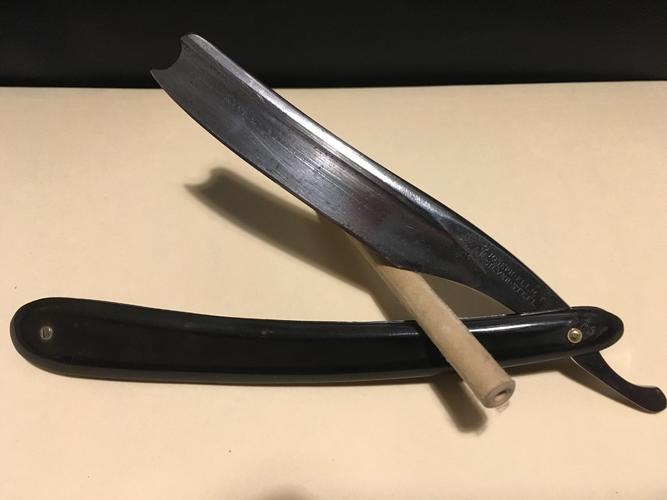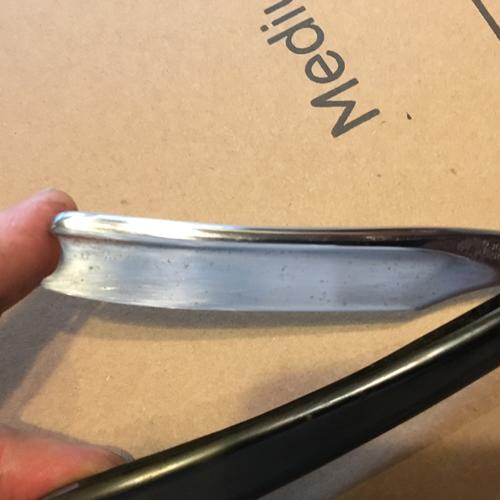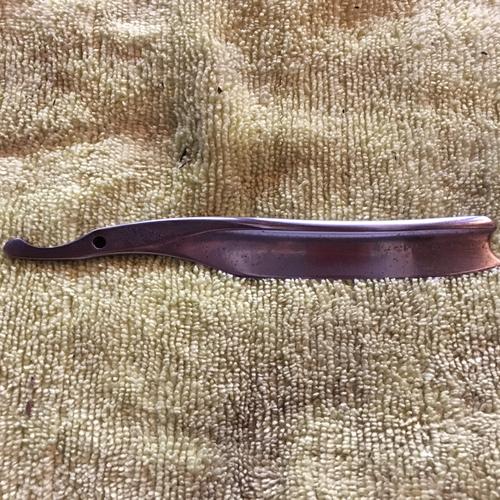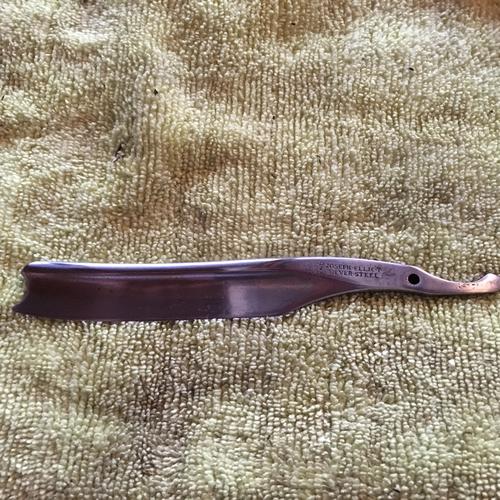Results 1 to 10 of 24
Hybrid View
-
06-10-2018, 07:37 PM #1Member

- Join Date
- May 2018
- Location
- San Mateo County, California
- Posts
- 48
Thanked: 3 When to move to from sanding to buffing with compound?
When to move to from sanding to buffing with compound?
Hi All -
Btw I also posted on another forum so those who see this twice please excuse.
Could use some Pointers on when it's time to move from sanding to buffing with compound as the only thing I have ever buffed if my cars... I'm working on my first restore/cleanup on a Joseph Elliot and it has a good amount of pitting scars after two rounds of sanding. I don't think I want to make it pristine nor should I try...
Has anyone used the buffing compounds from Harbor freight?
any pointers is always much appreciated.
I think making progress...
The Starting subject

After first round

Now after 2 rounds to 150 - 1500grit


-
06-10-2018, 08:37 PM #2

Welcome to SRP! This is a great community.
I move from sand paper to compound with a buffing wheel at 600 grit sand paper for steel. 600 grit looks very similar to a satin finish on a new knife or razor. I haven't used Harbor Freight buffing compound, though would guess it would work.
Your posting brings up other comments for me as well.
Personally, I don't like to make historical items look new, though plenty of folks do. I think of preserve rather than restore. The rust needed to come off. A little piece of pure copper sheet will remove rust far less aggressively than sand paper.
I bring this up as it sounds like you are getting a great start with straight razors and suggest deciding which way you want to go.
I'm not sure how much you have used a buffing wheel. Buffing a knife or razor blade is very dangerous and requires much concentration. If the edge of the item you are buffing gets caught by the buffing wheel, which can happen in the blink of an eye, it will send it flying with solid possibility to cut you badly. I always put painters tape on the cutting edge if possible. If I can't do that, I stay very, very focused.
This is a great start. I look forward to seeing more of your projects. Looks like you have scales for this blade, though that is also a fun project.Last edited by Pete123; 06-10-2018 at 08:41 PM.
-
-
06-10-2018, 10:38 PM #3

Im with Pete on this one. An older blade like that shouldnt be brought to a mirror shine. JMO. A little dulness on the blade and some pitting but still being cleaned up well has more appeal to me. A buffer will bring it to a mirror finish with the right compounds. And ive never tried HF compounds so can help you there. I go to the buffer around 600 or 800 and start with 400 compound. I know its going backwards but it dont take much time on the buffer to finish it off to a nice look. Non mirror.
Good luck and let us know how it goes for ya. You got an old blade and it will be a great piece for a collection. Now, make your scales as clean and shinny as possible. Again, JMO.It's just Sharpening, right?
Jerry...
-
The Following User Says Thank You to Gasman For This Useful Post:
Shojo510 (06-11-2018)
-
06-11-2018, 01:05 AM #4

Regarding the buffing compound, I can share what I do.
My buffing blocks are color coded. They may have come with info on the grit, though I know them by color. There isn't a standard for the colors, though my experience is that most companies are somewhat similar.
I have four:
Black: Most aggressive. I don't use this on steel as it leaves scratches.
Brown: I'll start steel on this one.
Pink: I use this as a next step, as well as the go to for polishing acrylic and other resins, horn, micarta. I sand to a higher grit before moving to the buffer with them. At least 800, sometimes more.
White: This is meant for chrome. I use with with steel, acrylic and other resins for the extra shine.
-
The Following User Says Thank You to Pete123 For This Useful Post:
Shojo510 (06-11-2018)
-
06-11-2018, 01:26 AM #5

Congratulations on your project.
From what the pictures show, I think I'd just use a metal polish such as Mothers, MASS, Blue Magic etc and see what you have.
As it has been said, buffers that aren't used properly are Very Dangerous! I started with a cloth wheel on a bolt attached to a cordless drill and got some good results.
Yes I do have a buffer and it's variable speed so I can control the way the compounds are working and how hot the blade gets--YES! You have to be very careful about that also.
Now, there are various 'Compounds' out there some are listed as 'Polishing Compounds' which have many colors to designate the grits and then there are 'Greaseless Compounds' and the lower grits are all red in color but the 400 and 600 are black. I prefer to use the Greaseless Compounds.
Back to using a buffer safely. Here's a link and if you read what's there including the PDF you'll have to download or at least watch separately you'll have a better idea of how to Safely use a buffer.
https://www.caswellplating.com/buffman.htm
Now to Harbor Freight's compounds. While I've never tried them, IF they are anything like their sandpapers, I'd avoid them like the plague! Your money will be better spent on compounds that are sold by reputable sellers such as Caswell and others like them.
Eye Protection is a MUST! Respiration Protection is Highly Recommended.
Take your time and go slow, the body part you save may just be your own. To hell with the razor/it can be replaced!Our house is as Neil left it- an Aladdins cave of 'stuff'.
Kim X
-
The Following 3 Users Say Thank You to cudarunner For This Useful Post:
criswilson10 (06-12-2018), Pete123 (06-11-2018), Shojo510 (06-11-2018)
-
06-11-2018, 02:07 AM #6Member

- Join Date
- May 2018
- Location
- San Mateo County, California
- Posts
- 48
Thanked: 3
Taking in the wealth of info here, thank you all for your input...
John


 40Likes
40Likes LinkBack URL
LinkBack URL About LinkBacks
About LinkBacks







 Reply With Quote
Reply With Quote

